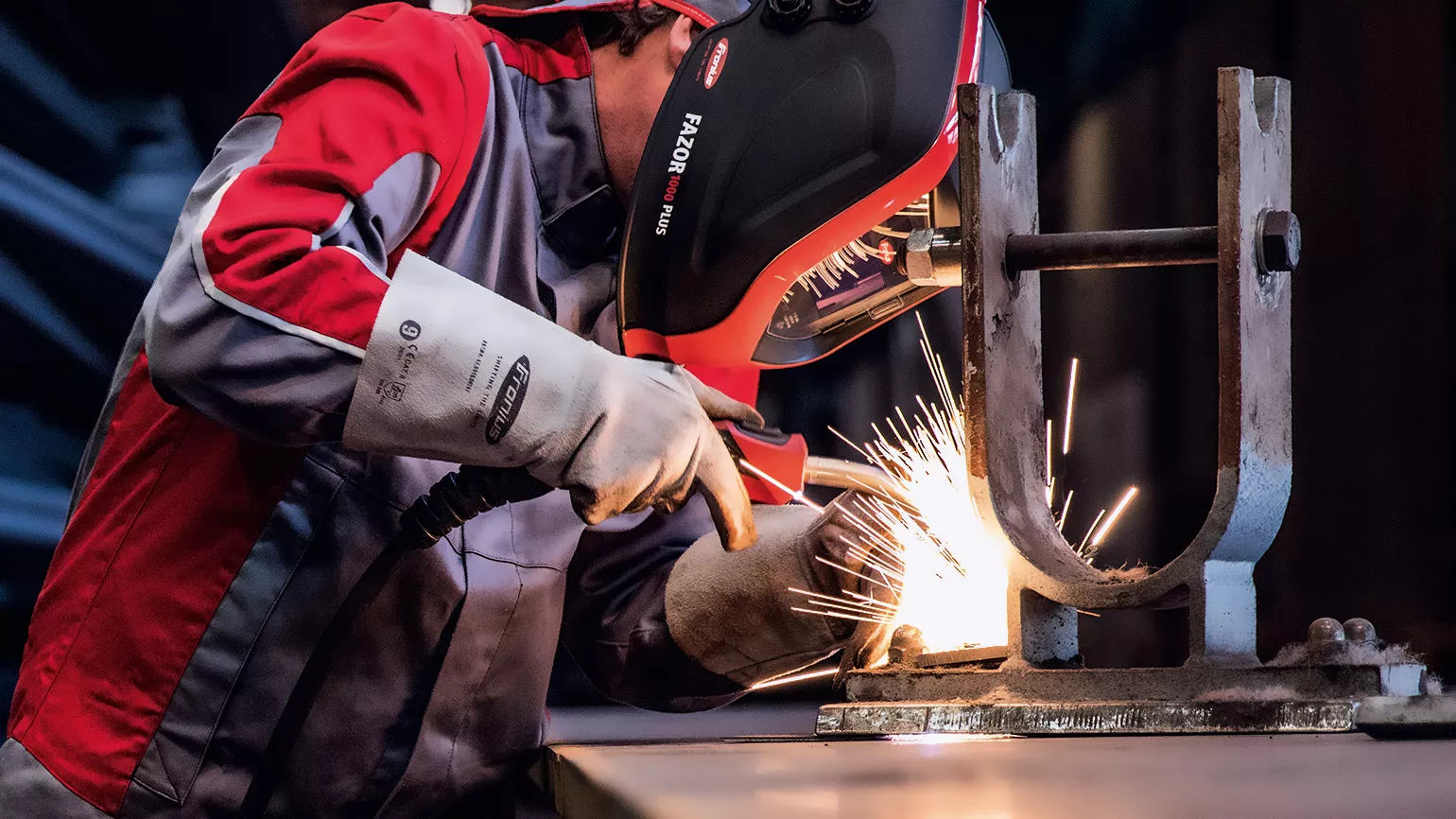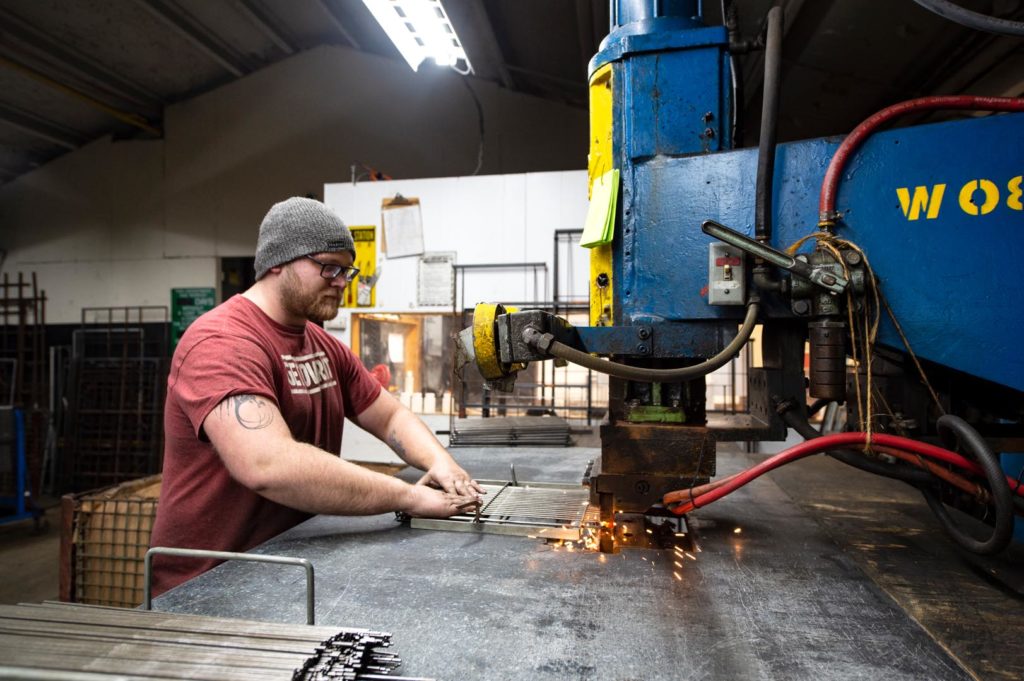Common Welding Repair Service Issues and Exactly How to Address Them Effectively
Welding repair work often encounter an array of concerns that can threaten the honesty of the end product. Usual issues consist of insufficient infiltration, porosity, and misalignment, among others. Each flaw offers special difficulties that need particular approaches for resolution. Recognizing these problems is necessary for welders intending to boost their results and skills. This discussion will discover these usual welding fixing issues and effective approaches to resolve them.
Insufficient Infiltration
Poor infiltration happens when the weld metal fails to completely fuse with the base material, causing weak joints and potential structural failures. This problem usually originates from inadequate warmth input, incorrect electrode angle, or improper welding rate. Welders might experience inadequate infiltration as a result of a mistake of the necessary criteria for a particular material density or type. Additionally, contamination on the base product's surface area can impede effective bonding, aggravating the problem. To address inadequate penetration, welders need to ensure ideal setups on their devices and maintain a clean job surface area. Regular examination of welds is recommended to identify any shortages early, enabling for timely adjustments and the avoidance of endangered structural stability in bonded settings up.
Porosity
Porosity is an usual issue in welded joints that manifests as tiny gas bubbles trapped within the weld metal. This issue can jeopardize the integrity of the weld, resulting in minimized strength and prospective failing under anxiety. Montana Mobile Welding and Repair Fabrication. Porosity commonly emerges from contamination, dampness, or incorrect welding methods, which enable gases to run away right into the molten weld swimming pool. To attend to porosity, welders ought to assure proper surface area preparation, keep a clean working setting, and use appropriate welding criteria. Additionally, picking the best filler material and shielding gas can reduce gas entrapment. Routine evaluation and screening of welds can assist identify porosity early, guaranteeing prompt corrective activities are taken, consequently protecting the top quality and dependability of the welded framework
Imbalance
Imbalance in welding can emerge from numerous elements, including improper setup and thermal development. Comprehending the source is crucial for effective resolution. Numerous modification techniques are available to straighten elements and guarantee structural integrity.
Reasons for Imbalance
Welding imbalance frequently comes from a variety of underlying problems that can endanger architectural stability. One key cause is incorrect fit-up of parts prior to welding, which can result in voids and uneven surface areas. Variations in thermal development during the welding process can also lead to distortion, specifically if the materials being signed up with have different coefficients of development. In addition, insufficient fixturing and securing might fall short to hold parts firmly in position, resulting in activity during welding. Poorly kept equipment, including welding equipments and devices, may present incongruities in the weld grain, more contributing to misalignment. Operator mistake, stemming from not enough training or experience, can additionally play a considerable role in developing misaligned welds.

Correction Methods Readily Available
Attending to imbalance successfully requires a combination of restorative strategies customized to the certain concerns at hand. One common technique is making use of jigs or fixtures to hold elements in the proper setting throughout welding, making sure constant alignment. In addition, preheating the materials can aid lower distortion and enhance fit-up. For significant misalignment, mechanical adjustment strategies, such as using hydraulic jacks or clamps, can be utilized to deal with the placement prior to welding. Post-weld warmth therapy may likewise be essential to alleviate stress and anxieties brought on by misalignment. Ultimately, careful evaluation and change throughout the configuration phase can stop misalignment problems from ending up being substantial troubles, promoting a smoother welding process and enhancing total structural stability.
Distortion
Distortion is an usual difficulty in welding that can emerge from numerous factors, including irregular cooling and heating. Comprehending the reasons of distortion is vital for applying reliable prevention methods. Resolving this issue not just improves structural honesty however additionally boosts the overall quality of the weld.
Sources of Distortion
When subjected to the extreme warmth of welding, materials frequently undertake changes that can lead to distortion. This sensation primarily emerges from thermal growth and contraction during the welding process. As the weld area warms up, the material expands; upon cooling, it contracts, which can produce interior stresses. On top of that, uneven home heating throughout a work surface can aggravate these tensions, causing warping or bending. The kind of product additionally plays a substantial function; metals with varying thermal conductivity and coefficients of development may respond differently, causing unforeseeable distortions. Bad joint design and poor fixturing can contribute to imbalance during welding, increasing the chance of distortion. Understanding these reasons is crucial for effective welding fixing and avoidance strategies.
Prevention Techniques
Reliable prevention strategies for distortion throughout welding focus on managing warm input and making sure proper joint design. Preserving a regular warm input assists to minimize thermal development and contraction, which can cause distortion. Using techniques such as preheating the work surface can also minimize the temperature slope, promoting uniform heating. Additionally, choosing appropriate joint designs, such as T-joints or lap joints, can enhance stability and minimize stress and anxiety focus. Applying correct fixturing to secure the work surfaces in location better aids in preserving alignment during the welding procedure. Staggered welding series can disperse warmth much more evenly, preventing localized distortion. By using acetylene torches these approaches, welders can substantially reduce the probability of distortion and boost the general top quality of their welds.
Cracking
Cracking is an usual concern encountered in welding repair work, commonly resulting from numerous variables such as inappropriate air conditioning prices, product choice, or inadequate joint prep work. The event of cracks can greatly endanger the integrity of the weld, bring about potential failures throughout operation. To address this concern, welders must first examine the origin creates, making certain that materials are compatible and properly selected for the certain application. Furthermore, controlling the cooling price during the welding process is necessary; quick cooling can cause anxiety and bring about splitting. Proper joint layout and preparation also add to decreasing the danger. Implementing these strategies can enhance weld high quality and resilience, ultimately minimizing the possibility of splitting in completed weldments.

Incomplete Combination
A substantial concern in welding repair services is insufficient blend, which occurs when the weld metal does not adequately bond with the base product or previous weld passes - Montana Mobile Welding and Repair Welding. This issue can bring about weak points in the joint, possibly compromising the stability of the bonded structure. Factors adding to incomplete blend include not enough warm input, incorrect welding method, and contamination of the surface areas being signed up with. To resolve this problem effectively, welders should guarantee appropriate pre-weld cleaning and surface preparation, in addition to readjust their welding parameters to achieve sufficient penetration and fusion. Regular examination during the welding process can also aid determine incomplete combination early, enabling for timely restorative procedures to boost the overall top quality of the weld
Overheating
While welding repairs can improve structural stability, overheating provides a substantial obstacle that can result in material degradation. Excessive warmth throughout welding can alter the mechanical properties of steels, leading to decreased toughness, boosted brittleness, and bending. This sensation is especially crucial in high-stress applications where architectural dependability is critical. Determining getting too hot can entail aesthetic assessments for discoloration or distortion, along with keeping an eye on temperature during the welding process. To minimize the threats connected with overheating, welders need to utilize suitable techniques, such as controlling warmth input, adjusting travel rate, and using ideal filler materials. In addition, applying pre- and post-weld warm treatments can aid bring back material buildings and improve the total top quality of the repair, ensuring long-lasting efficiency and security.
Often Asked Inquiries
What Are the Usual Signs of a Welding Issue?

How Can I Check My Welds for High quality?
To test welds for top quality, one can make use of aesthetic evaluations, ultrasonic testing, and radiographic approaches. Each method assures structural honesty, determines defects, and confirms adherence to specified requirements, ultimately improving the dependability of the welded joints.
What Security Safety Measures Should I Take While Welding?
When welding, one ought to focus on safety by wearing ideal personal safety internet equipment, making sure appropriate ventilation, protecting combustible products away, preserving a tidy office, and knowing environments to protect against injuries and mishaps.
Can I Repair a Weld Without Renovating the Entire Joint?
Fixing a weld without redesigning the entire joint is feasible, relying on the damage (Montana Mobile Welding and Repair Fabrication). Techniques such as grinding, including filler material, or utilizing a welding procedure can properly deal with particular problems while protecting the bordering framework
What Equipment Are Essential for Efficient Welding Repair Works?
Essential devices for reliable welding fixings consist of a welding equipment, wire brush, grinder, safety gear, clamps, and filler products. Each tool plays an important role in making certain quality and safety and security during the fixing process. Porosity commonly arises from contamination, moisture, or improper welding methods, which enable gases to escape right into the molten weld swimming pool. Badly kept devices, including welding makers and devices, may present incongruities in the weld bead, additional contributing to imbalance. When subjected to the extreme warm of welding, materials typically go through modifications that can lead to distortion. Splitting is a typical concern run into in welding repairs, usually resulting from various elements such as improper cooling prices, product selection, or insufficient joint preparation. A substantial issue in welding repair services is insufficient combination, which takes place when the weld metal does not adequately bond with the base material or previous weld passes.